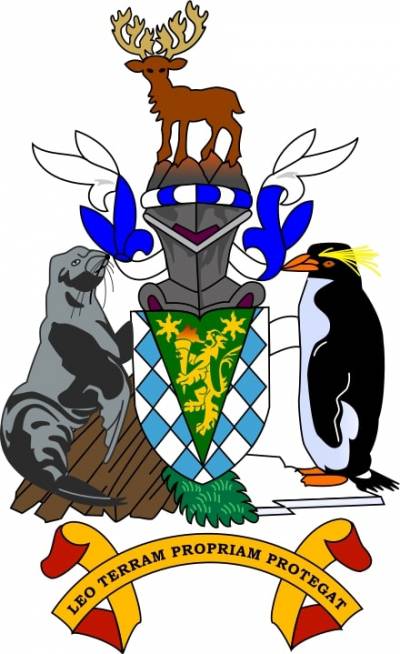The flag of South Georgia and the South Sandwich Islands was adopted in 1992 and has a standard appearance for the British-controlled territories: a blue cloth with the Union Jack in the canton (upper left corner of the flag) and the coat of arms of the territory on the right side of the flag.
Flag of South Georgia and the South Sandwich Islands

Official Colors
Country information




